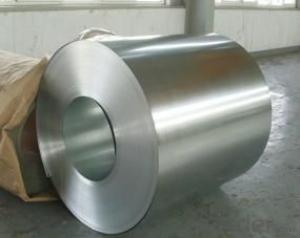Reinforced bars, often referred to as rebar, are the unsung heroes of modern infrastructure. They are the steel backbone that gives strength and stability to our buildings, bridges, and roads. These bars, made from steel alloys, are designed to resist tension, one of the primary forces that can cause a structure to fail. Without rebar, our infrastructure would be much weaker and more susceptible to damage from natural disasters, heavy loads, and everyday wear and tear.
The History of Reinforcement
The concept of reinforcing concrete with steel bars dates back to the early 20th century. The first patent for reinforced concrete was granted in 1892 to Joseph Monier, a French gardener. Monier’s invention revolutionized the construction industry, allowing for the creation of larger, more complex structures than ever before. Since then, rebar has become an essential component in the construction of modern infrastructure.
The Making of Reinforced Bars
Reinforced bars are made from high-quality steel, which is heated and then rolled into various shapes and sizes. The most common shape is a smooth round bar, but they can also be ribbed or deformed to increase their bond with the concrete. The manufacturing process involves several stages, including heating, rolling, cooling, and coiling. Each bar is carefully crafted to meet specific strength and durability requirements.
The Role of Rebar in Construction
Rebar plays a crucial role in the construction process. It is used to reinforce concrete in various ways, such as:
– Foundations: Rebar strengthens the foundation of a structure, providing support and stability.
– Columns: Vertical bars are used in columns to resist compressive forces.
– Beams and slabs: Horizontal bars are used in beams and slabs to resist bending and tensile forces.
– Shear walls: Rebar is used in shear walls to resist lateral forces, such as those caused by earthquakes.
The Importance of Proper Placement
Proper placement of rebar is critical to the structural integrity of a building. It must be positioned accurately within the concrete formwork to ensure that the concrete fully encases the bars. This process requires careful planning and skilled labor. The rebar must also be tied together or secured with wire to maintain its position during the concrete pouring process.
The Challenges of Reinforcement
Despite the importance of rebar, there are challenges associated with its use. Corrosion is a significant issue, as steel can rust when exposed to moisture. This can weaken the rebar and compromise the structure’s integrity. To combat this, rebar is often coated with epoxy or other protective materials. Additionally, the cost and availability of steel can affect the use of rebar in construction projects.
The Future of Reinforcement
As we look to the future, the role of rebar in construction is likely to evolve. New materials and technologies are being developed to improve the strength and durability of reinforced concrete structures. For example, the use of fiber-reinforced polymers (FRPs) is gaining popularity as an alternative to traditional rebar. These materials offer advantages such as resistance to corrosion and lighter weight. However, the widespread adoption of these new technologies will depend on their cost-effectiveness and ease of integration into existing construction practices.
The Emotional Connection to Rebar
While rebar may not be glamorous, it is an integral part of our daily lives. It is the silent guardian that supports the structures we rely on for safety and shelter. The next time you walk into a building or cross a bridge, take a moment to appreciate the unseen strength of rebar. It is a testament to human ingenuity and the power of collaboration between different materials to create something greater than the sum of its parts.
Conclusion
Reinforced bars are the backbone of modern infrastructure, providing the strength and stability needed for our structures to stand the test of time. From the initial invention by Joseph Monier to the ongoing innovations in material science, rebar has come a long way. As we continue to push the boundaries of what is possible in construction, rebar will remain a vital component in our quest to build a stronger, more resilient world.

